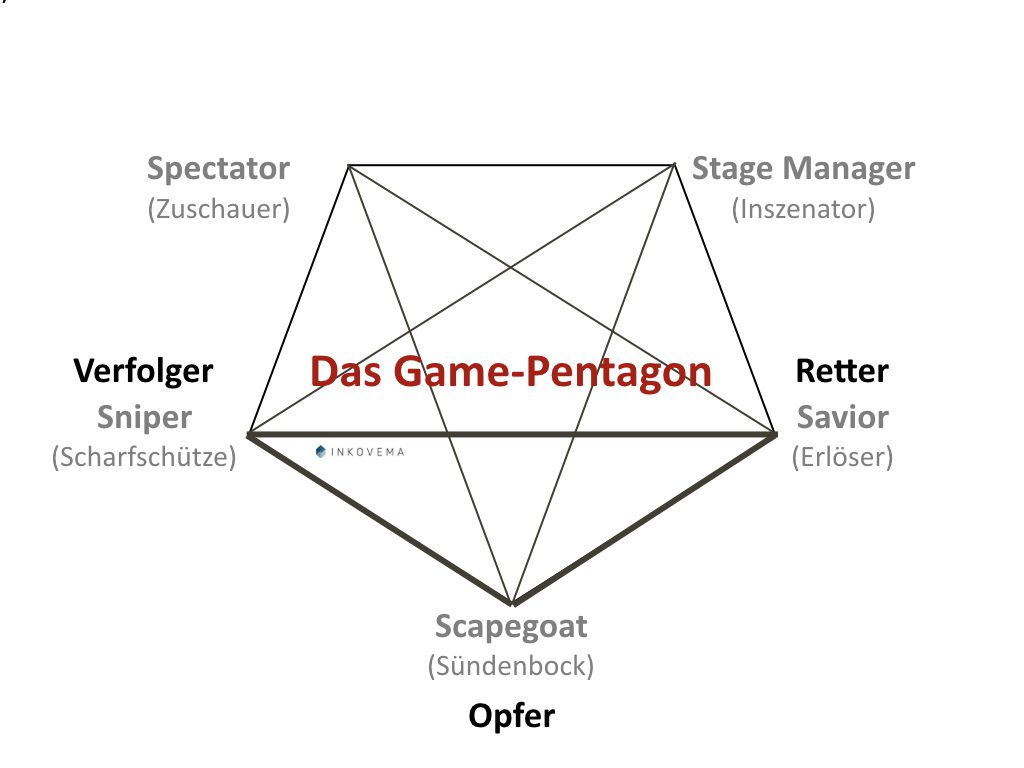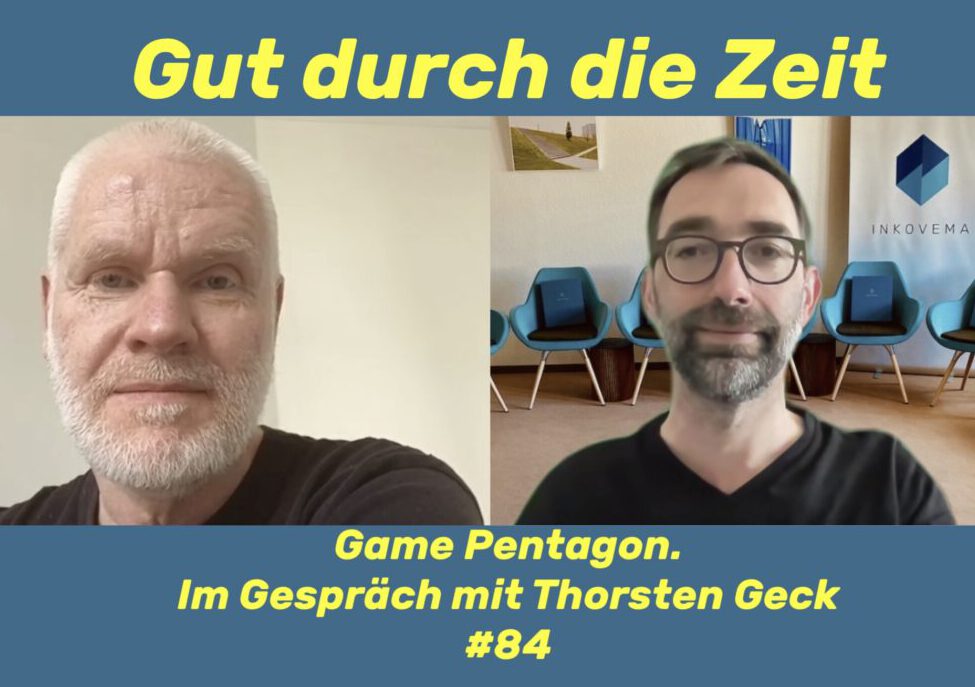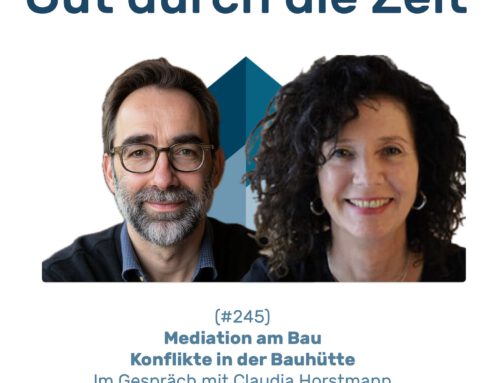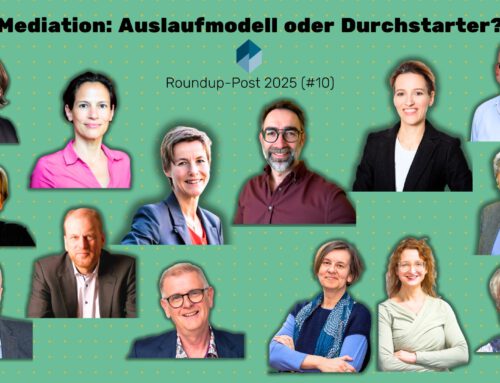INKOVEMA Podcast „Well through time“
#84 – Game Pentagon. A transactional analysis concept for conflicts in organisations.
Was das Dramadreieck für Personenkonflikte ist, ist das Game Pentagon für Organisationskonflikte. Im Gespräch mit Thorsten Geck
Well through time. The podcast about mediation, conflict coaching and organisational consulting.
Thorsten Geckpsychologist, counsellor, coach and keynote speaker. Today, Thorsten Geck specialises in supporting teams and advising management duos. Teaching and supervising transactional analyst in the field of organisation. Member of EATA and ITAA, the European and International Societies for Transactional Analysis, Thorsten Geck is on the ITAA board responsible for professional standards and examinations. He works in Germany, India, Czech Republic, UK, Poland, U.S.A, Australia.


Contents:
Positions in the Game Pentagon:
-
Sniper (sniper). A concise but perhaps drastic translation for the dialogue with the client system is "the sniper". The sniper names the conflict, clearly emphasises the problem area and blames other people or target groups. This position is reserved for the scapegoat in the conflict.
-
Scapegoat. This person (or group) is held responsible for the problem. Linked to this is the view (or, in the case of high levels of suffering, the desire) that removing the scapegoat will also eliminate the problem. Where aggressor and (supposed) victim are to be found, the search for a problem solver is obvious.
- Saviour. In translation, a "saviour" or "redeemer". The saviour is given the task of solving the problem that has arisen and saving those involved. hesolve the problem. Against the background of the professional competence of this problem solver and his familiarity with various counselling formats, ways of solving problems are then taken that are familiar to this person: conflict training for a specific target group. The aim is to teach them how to assert themselves. Negotiation training to assert their own organisation-specific interests, a cross-departmental workshop in which factual issues are "moderated", etc.
These protagonists appear familiar from the theory of the drama triangle. However, Summerton points out that these are not psychological roles or attitudes, but positions that are to be located in an organisational conflict. He expands this perspective to include the following players:
- Spectator. Every theatre performance is only complete when someone follows and appreciates the performance of the protagonists. This task is performed by the audience. They do not appear to be involved on the outside and are seemingly uninterested in the outcome of the play. Internally, the viewer satisfies his need for stimulation. The spectator underestimates his contribution to the conflict by doing nothing. He feels that he is not responsible and sees no need to intervene.
-
Stage Manager. This placeholder is intended for those protagonists who prepare the ground for the organisational game or start it, even if they are not visible at first. They set the conflict in motion through the given framework conditions and perhaps leave it to others to act out the conflict. The stage manager provides the resources from which the conflict arises and also how it could be resolved. In order to grasp the significance of the stage manager, we need to broaden our perspective to include their diverse and subtle influences: What is his key position in the conflict? Who does he envisage as the people involved in the course of the drama? What historical, legal or corporate cultural aspects form the backdrop for his actions? How do he and the system benefit from the unrest he introduces? What does he gain from regulating the conflict by putting his foot down or allocating resources?
Benefits for mediation:
Like other models, it also constructs reality. Its advantages are
(1) In addition to psychological factors, it also covers system-related or structural aspects.
(2) It refers to the (historical) roots of the system in which the conflict takes place.
(3) It emphasises that in a group even the seemingly uninvolved agents have a conflict-preserving function - due to their belonging to the group and their passivity in the face of the problem.
(4) The Pentagon game reduces complexity in the conflict analysis, but does not close itself off to a broader perspective.
The game pentagon can be used in conflict counselling for analysing and planning interventions can be used.
Literature:
- Summerton, Oswald: The Game Pentagon, in: Transactional Analysis Journal, 1992, pp. 66-75.
- Geck, Thorsten: From the Drama Triangle to the Game Pentagon, in: Theory and practice of transactional analysis in mediation. A handbook. Edited by Sascha Weigel, Baden Baden 2014, S. 882 - 894.




Leave A Comment